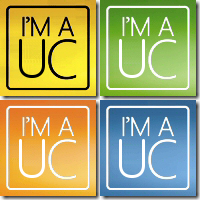OCS 2007 R2 with telephony and no on-site PBX can now be realised
The deployment of Office Communications Server 2007 R2 usually requires a PBX for telephony functionality, however the R2 version allows for remote SIP trunking, therefore the opportunity to integrate with 3rd party telephony breakout services.
To-date I am not aware of any Microsoft partners offering these services, until now…
Taken from JahJah’s website:
Introducing JAJAH SIP Trunking, now certified by Microsoft
Unified Communications Services are a giant leap forward for enterprises and small to medium sized businesses seeking greater productivity and more efficient ways for employees to communicate and collaborate with each other, customers, suppliers and partners.
Microsoft Office Communications Server 2007 Release 2 (OCS) and JAJAH’s IP Communications Platform, enterprises are now able to implement a fully scalable IP communications solution across the organization, whether single or multi-site, local or global, without requiring infrastructure upgrades.
As a SIP Trunking provider for Microsoft OCS, JAJAH provides full IP telephony capabilities to any organization using Microsoft OCS, anywhere in the world.
In addition, JAJAH’s range of mobile, desktop and landline IP telephony solutions seamlessly complement Microsoft OCS, extending the Unified Communications capabilities of the enterprise outside the office.
What is SIP Trunking and why do I need it?
Over the past two decades communications have largely moved from analog signaling, PBX and related infrastructure to digital technologies leveraging the Internet. The shift is primarily driven by the decreased cost and increased resource efficiency that comes from IP communications, without any loss of security or quality. As communications services have converged onto the Internet the ability to integrate numerous services has developed. The result is Unified Communications.
SIP Trunking is the delivery mechanism that underpins unified communications, providing the function of connecting an organization’s PBX(s) to the necessary service providers. In doing so, it ensures phone calls and other IP-based communications originating from an employees’ phone or computer are connected to the destination.
Enterprises interested in implementing unified communication solutions consider video, presence, instant messaging and other communication and collaboration tools. Voice over IP, which is a core element of IP communications, is powered by SIP Trunking.
Any enterprise looking to implement a VoIP or Unified Communications service must have a SIP Trunking provider.
Source: here





